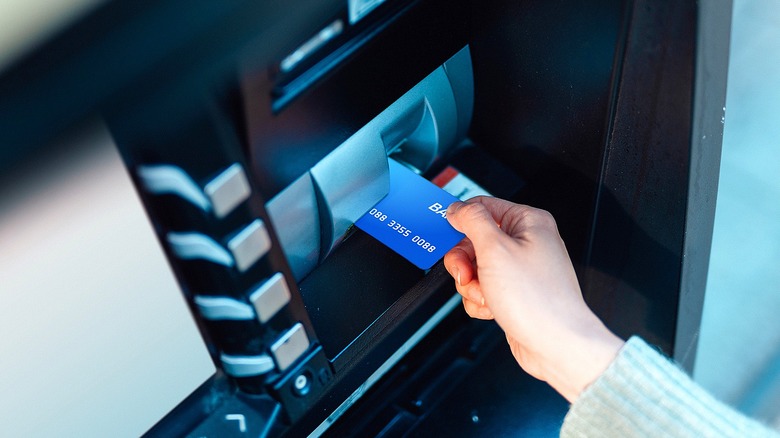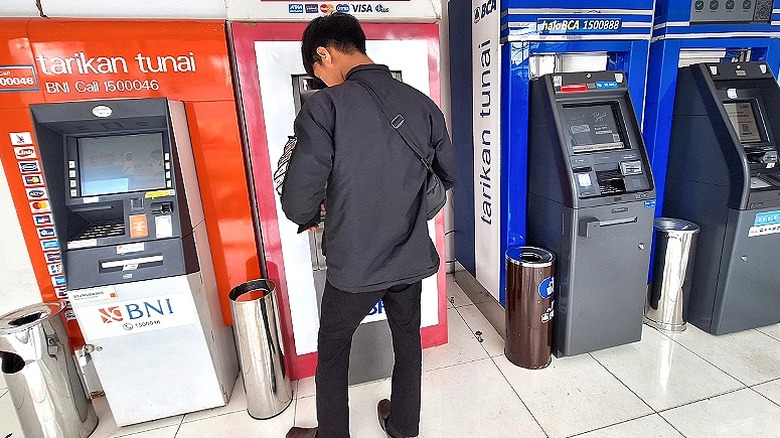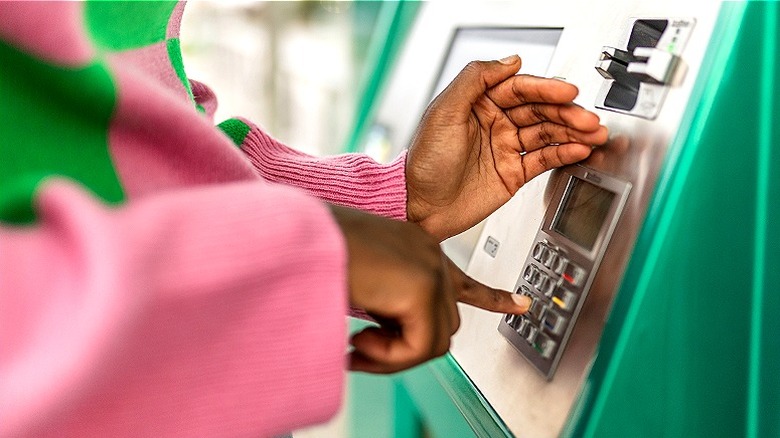You've Been Warned: Beware Of 'Shoulder Surfers' When Using An ATM Abroad
Most people don't think twice about using an ATM. After all, these machines are extremely convenient, allowing folks to quickly withdraw cash and avoid waiting in line at a brick-and-mortar bank. However, such convenience makes ATMs hotspots for scammers. Since many ATM users are on the go and want their transaction to be as quick as possible, they're not necessarily taking the time to check their surroundings or make sure the machine is safe ... and criminals are taking advantage.
Over the years, a number of ATM scams have emerged. These include everything from skimming, which involves the installation of an illegal device in the ATM to capture private credit card data, to stealing the entire machine. Then there's shoulder surfing, one of the easiest and most effective scams that doesn't involve high-tech devices or hauling anything around in the middle of the night. Rather, all a shoulder surfer has to do is exactly what the name suggests: peek over an ATM user's shoulder to obtain vital banking information.
How shoulder surfing works
In order to successfully shoulder surf, all a scammer has to do is stand close enough to an ATM user to view — and memorize — their PIN as they enter it into the machine. If standing nearby isn't an option, scammers are also known to spy from a distance using binoculars.
According to Aura, an AI identity-theft protection service, "Shoulder surfing is really a very simple form of scam that relies on you not paying attention." This is why it's especially prevalent abroad, with fraudsters targeting unsuspecting tourists. As you're enjoying a new city and taking in the sights (and hitting the nearby ATM for extra souvenir cash), the last thing you're expecting is to have your personal finances compromised. (Read about major money mistakes while traveling.)
Still, shoulder surfing isn't limited to overseas, with bad actors lurking at ATMs in the United States as well. For example, in Fairfield, California, Fairfield Police were on the hunt for a woman who was caught on surveillance trying to catch a glimpse of ATM users' information. Detective Kathryn McCormick explained to CBS News Sacramento, "When you leave the ATM, they rush up quickly and enter your PIN number back into the machine, which starts a new transaction. From there, they could do anything that you could do at the ATM, and withdraw money up to whatever your daily maximum allowed is."
How to avoid falling victim to shoulder surfing
Shoulder surfers can wreak havoc on your personal finances, but the good news is, these criminals are pretty easy to thwart. Since this scam largely involves them being able to see your PIN number as you type it into the ATM, the best way to avoid falling victim is to shield the keypad from view. This can be done by hunching over the keypad as you enter the PIN, or using your free hand to hide it from prying eyes.
Another important tactic is to be aware of your surroundings when using an ATM. If you notice an individual standing in the vicinity, it might be a good idea to avoid that ATM altogether and find another one. Additionally, if you have a vehicle and want to avoid entering a brick-and-mortar branch, most banks offer a drive-thru option to withdraw cash (here's how to find an ATM that won't charge a withdrawal fee) and complete other transactions.
It's also highly suggested that you memorize your PIN number. Some people write these digits on their so that they won't forget them, but this only makes it easier for shoulder surfers to snag the information they need. (Find out why you should reconsider using your debit card at the gas station.)


